
Lenzing is a small town of approximately 5,000 residents, three kilometers north of Lake Attersee in Austria, It is located in the Upper Austrian part of the Salzkammergut.

Auerbach is a town in Upper Austria, Austria. Its length from north to south is 4.3 km and from east to west is 5 km; its area is 10.78 km2. In 2015, it had 565 inhabitants.

Krimml is a municipality in Zell am See District, in the federal state of Salzburg, Austria, in the Pinzgau region.
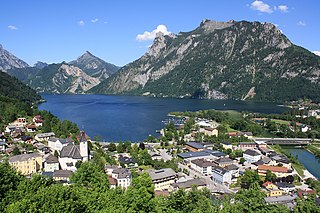
Ebensee am Traunsee is a market town in the Traunviertel region of the Austrian state of Upper Austria, located within the Salzkammergut Mountains at the southern end of the Traunsee. The regional capital Linz lies approximately 90 km (56 mi) to the north, nearest towns are Gmunden and Bad Ischl. The municipality also comprises the Katastralgemeinden of Langwies, Oberlangbath, Rindbach, Kohlstatt and Roith.
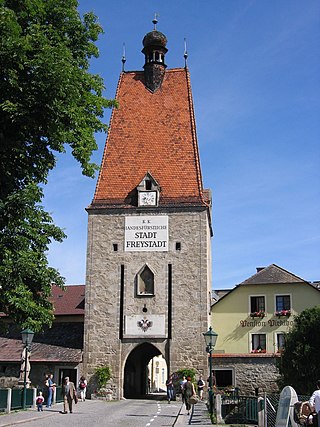
Freistadt is a small Austrian town in the state of Upper Austria in the region Mühlviertel. With a population of approximately 7,500 residents, it is a trade centre for local villages. Freistadt is the economic centre of a district of the same name District Freistadt. The nearest sizeable cities are Linz, the capital of Upper Austria, about 40 km in the south, and České Budějovice, the capital of Southern Bohemia, about 60 km in the north.

Regau is a municipality in the Austrian state of Upper Austria near Vöcklabruck, which is the capital of the district.

Bad Kleinkirchheim is a municipality and spa town in the district of Spittal an der Drau, in Carinthia, Austria.

Liebenfels is a market town in the district of Sankt Veit an der Glan in the Austrian state of Carinthia.

Rennweg am Katschberg is a market town in the district of Spittal an der Drau in Carinthia, Austria.
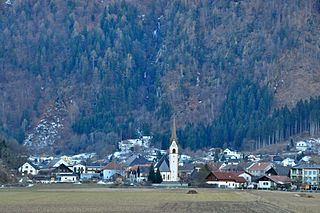
Sachsenburg is a market town in the district of Spittal an der Drau in Carinthia, Austria.
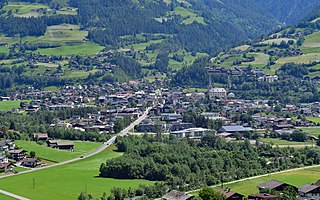
Matrei in Osttirol is a market town in the Lienz District in the Austrian state of Tyrol. It is situated about 29 km (18 mi) north of Lienz within the Hohe Tauern mountain range of the Central Eastern Alps. Its municipal area comprises parts of the Granatspitze Group and the Venediger Group, with the Großvenediger peak as its highest point. The population largely depends on tourism, seasonal agriculture and forestry.

Obertraun, Upper Austria is a village in the Salzkammergut, a region in Austria, near the Hallstätter See and Hoher Dachstein. It is a popular holiday destination with activities such as skiing and snowboarding in the winter, and mountain biking, swimming and kayaking in the summer.

Gallneukirchen is a small town in the Austrian state of Upper Austria and is part of the district Urfahr-Umgebung.

Franking is a municipality in the district Braunau am Inn in the Austrian state of Upper Austria.
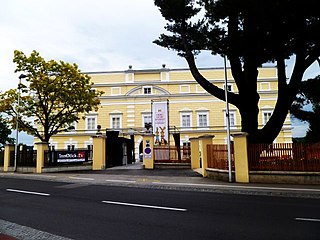
Mattighofen is a town in the district of Braunau am Inn, part of the Innviertel region, in the Austrian state of Upper Austria.

Sandl is a municipality in the district of Freistadt in Upper Austria, Austria.

Gosau is a municipality in the district of Gmunden in Upper Austria, Austria.

Hargelsberg is a municipality in the district Linz-Land in the Austrian state of Upper Austria.
Dimbach is a municipality in the district Perg in Upper Austria, Austria. It had a population of 1015 according to the 2015 census.
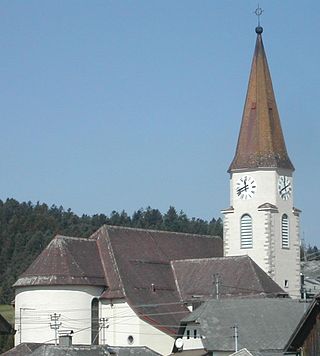
Oberkappel is a municipality in the district of Rohrbach in the state of Upper Austria.




















